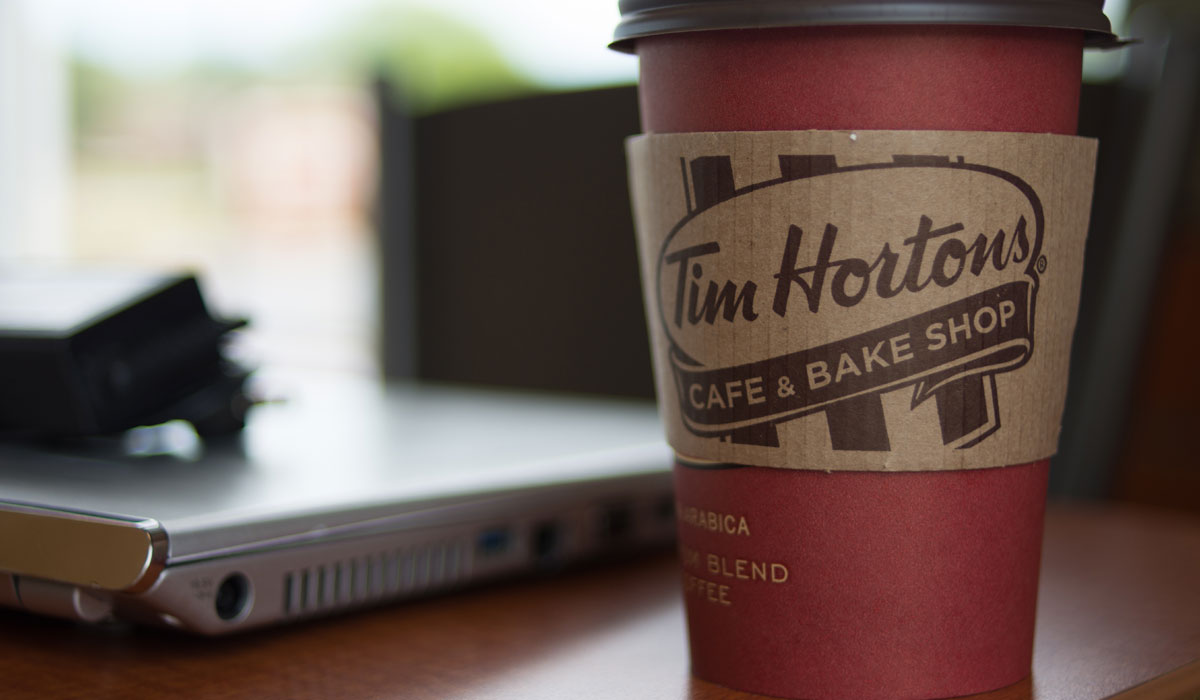Restaurant Brands International promised to be more forthcoming than usual at its first investor day in New York City. It began by unveiling a growth outline for its three brands—Burger King, Tim Hortons, and Popeyes—that would position RBI as one of the largest restaurant companies in the world.
RBI announced early Wednesday that it plans to boom from roughly 26,000 restaurants to more than 40,000 globally over the next 8–10 years.
“RBI is fundamentally a growth company, with three amazing, iconic brands that we believe have a very long runway for growth—both at home and around the world,” Jose Cil, chief executive officer, said in a statement. Cil took over the role in January as the company shook up its leadership structure.
It’s hard to predict what the landscape will look like in a decade. Given how hot the M&A space is right now, RBI or one of the other top-line groups could add another concept. Or perhaps sell one. Relative newcomer Inspire Brands, which became the country’s fifth largest restaurant company when it scooped up 3,600-unit Sonic Drive-In in December for $2.3 billion, is almost surely not done dealing.
But here’s where that 40,000 figure would stand today. YUM! Brands operates 48,457 restaurants (KFC: 22,886, Pizza Hut: 18,466, and Taco Bell: 7,105). Subway started the year with roughly 42,000 restaurants. McDonald’s has about 38,000. Starbucks 30,000 or so. Here’s a look at the U.S. picture. On the Inspire Brands move, the Arby’s-Buffalo Wild Wings-Rusty Taco-Sonic conglomerate covers more than 8,300 locations and annual systemwide sales in excess of $12 billion.
RBI said it’s well positioned to expand thanks to market trends. It said the five-year outlook for growth in the global burger market is expected to be 5 percent annually and the coffee and chicken segments should blossom 6 percent apiece yearly.
Based on Euromonitor data, it breaks down as follows:
Current
$458 billion
- Coffee: $64 billion
- Bakery: $118 billion
- Chicken: $72 billion
- Burger: $204 billion
Projected 2023
$591 billion
- Coffee: $85 billion
- Bakery: $149 billion
- Chicken: $98 billion
- Burger: $259 billion
The company, unquestionably, also has a proven track record when it comes to net restaurant growth. There were about 12,000 restaurants in RBI’s portfolio nine years ago. It’s grown systemwide sales from $15 billion to more than $32 billion in that same time period.
“We have a proven history of generating very strong returns for our shareholders and today we are excited to share more insight than we ever have before to support our belief that all three brands have substantial growth ahead,” Cil said.
At the end of the first quarter of fiscal 2019, RBI directed 17,823 Burger Kings; 4,866 Tim Hortons; and 3,120 Popeyes. Those were up from 16,859, 4,744, and 2,926, respectively, in the year-ago period, representing net growth of 5.7, 1.9, and 6.6 percent.
READ MORE: Burger King sees whitespace in coffee, breakfast, and menu innovation.
As for where RBI plans to grow, the company said there’s a 22,000-restaurant gap in North America; 3,000 in Latin America and the Caribbean; 13,000 in Europe, Middle East, and Africa; and 27,000 in Asia Pacific. This based on the biggest comparable brand in the region.
Today, those segments, by amount of stores, look as follows:
North America
- Burger King: 7,617
- Tim Hortons: 4,641
- Popeyes: 2,524
Largest category competitor in each respective segment
- 15,377
- 16,300
- 4,718
Latin America & Caribbean
- Burger King: 2,090
- Tim Hortons: 16
- Popeyes: 119
Largest category competitor in each respective segment
- 2,398
- 1,344
- 1,302
Europe, Middle East, and Africa
- Burger King: 5,282
- Tim Hortons: 164
- Popeyes: 338
Largest category competitor in each respective segment
- 10,134
- 3,421
- 5,117
Asia Pacific
- Burger King: 2,807
- Tim Hortons: 25
- Popeyes: 121
Largest category competitor in each respective segment
- 9,946
- 8,789
- 11,484
Consolidated, RBI’s net restaurant growth was 5.1 percent a year after it was 6.1 percent. So this sort of outline is nothing new for the company. Burger King did witness a slowdown in domestic growth this pat quarter with higher-than-normal closures. From the fourth quarter of 2018 to the end of Q1 2019, Burger King’s total stateside unit count declined 50 restaurants to 7,280 units from 7,330.
RBI has said before there remains ample room to expand each brand, but especially internationally with Popeyes. The company purchased the chicken chain on March 27, 2017 for $1.8 billion.
If you look at the category in general, 27 percent of KFC’s system sales occur in China alone. There are 18,547 international KFC stores. RBI chairman Daniel Schwartz said earlier in the year Popeyes would “establish partnerships to meaningfully accelerate net restaurant growth for Popeyes, including through new international master franchise agreements.” Last year, RBI signed its first international master franchise deal for Popeyes in Brazil and the Philippines.
His straightforward belief: Current and future deals will “set Popeyes up to be one of the fastest growing, global [quick-service restaurant] brands in the world.”
READ MORE: A look at Popeyes’ growth potential.
Rewinding back, 3G Capital took control for Burger King for $1.56 billion in 2010. Its net restaurant growth has accelerated from roughly 170 restaurants per year to more than 1,000 per year. Heading into the back-end of last year, RBI had also more than doubled Burger King’s adjusted EBITDA from $454 million back in 2011 to about $950 million on a trailing 12-month basis as of Q3 2018. RBI was formed, in name, when Warren Buffet’s Berkshire Hathaway was brought into the fold following an $11 billion takeover of Tim Hortons in 2014.
This past quarter, systemwide sales, thanks mostly to that net growth, grew 0.5 percent, 8.2 percent, and 6.8 percent at Tim Hortons, Burger King, and Popeyes, respectively, year-over-year.
Same-store sales declined 0.6 percent at Tim Hortons, grew 2.2 percent at Burger King, and upped 0.6 percent at Popeyes. The company posted earnings of 55 cents per share and net sales of $1.27 billion.








